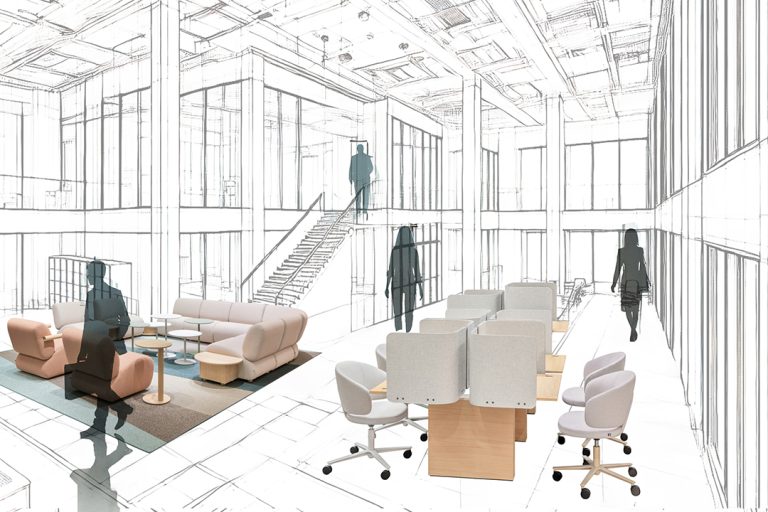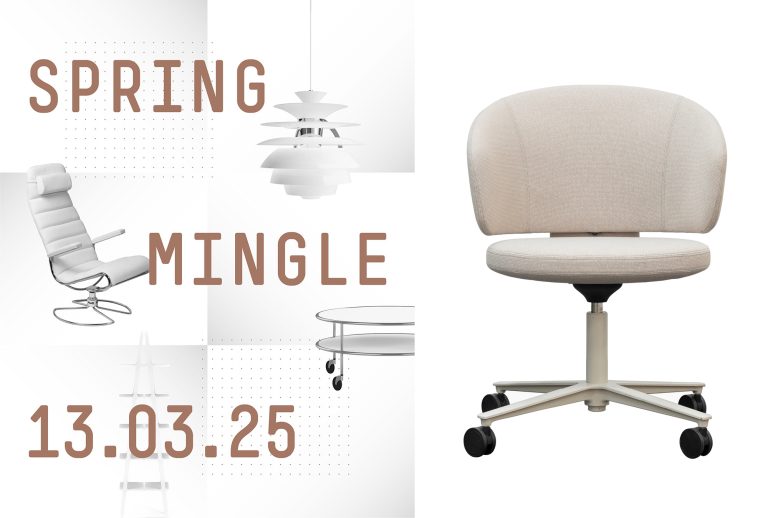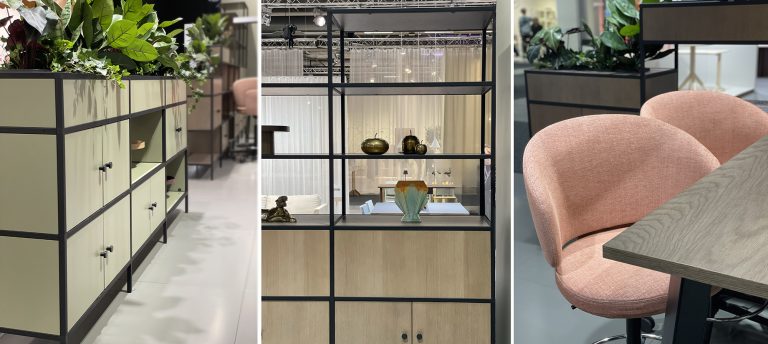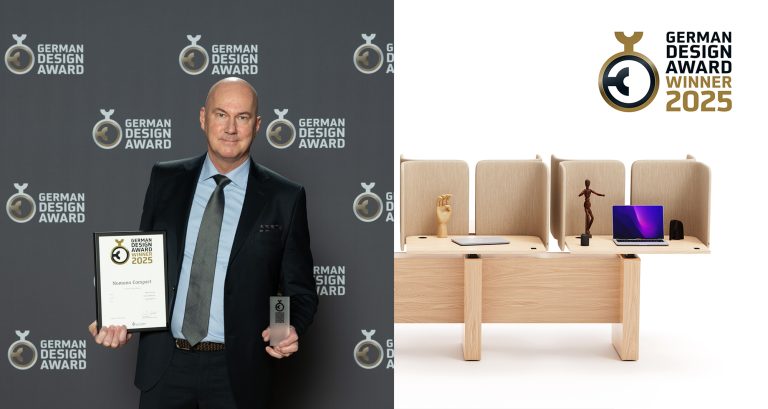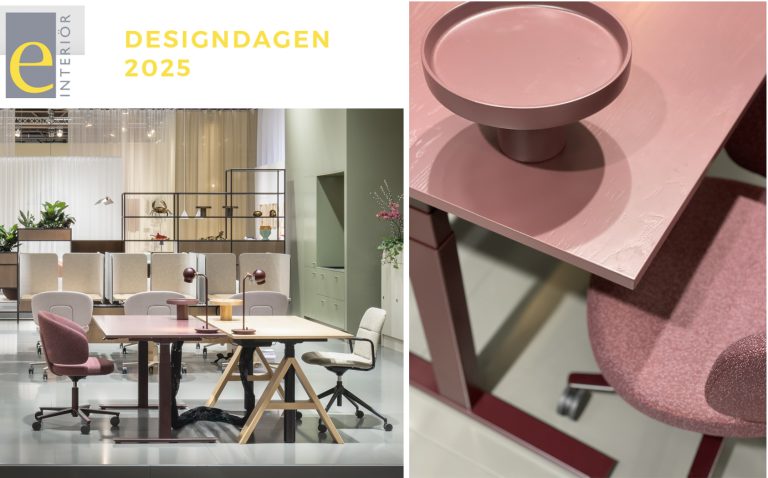Well-being, ecological awareness and leaving the smallest possible footprint. This is how the modern office worker wants it. Cities consume about 80 percent of the world’s energy and the design industry accounts for 44 percent of all material extraction. At the same time, as many as 84 percent of the working population expects companies to strive for global sustainability goals. The break from the office as workplace, caused by the pandemic, has given birth to new awareness that we’ll see will lead to bolder, more innovative and long-term transformations. The question we, design companies, architectural firms and manufacturers, ask ourselves is how can we best act? Where do we start?
No more pushing staff performance to the limits the old fashioned way – Companies now focus on helping their employees flourish. This does not only mean ping pong tables and resting pods, but also integrated gyms, larger kitchens for social moments with for example cooking, barista coffee bars, more showers and larger storage spaces for bicycles as standard in modern office buildings. Air quality, sound, light and climate also play a big role. Light affects the state of mind we need for different tasks, where the office can be divided into different light zones. The use of smart indoor climate technology is increasing and is continuously measured in order to gain insights that enable improvements. Planned elements of ”distraction” and work breaks are encouraged with the aim to inject energy to the staff.
MAD Architects in Beijing has introduced 5 insights for well-thought-out and sustainable design: 1. Movement – Organic “non-shapes” are mixed with structural and given shapes. 2. Diversity – A blend of local and global. 3. Symbiosis – Our emotions are utterly affected by designs that reflect nature. 4. Critique – Looking at each new assignment with a critical eye to encourage different perspectives. 5. Conversation – Interior and exterior spaces that embody different ways of thinking to enable discussion and interaction.
More nature inside offices has proven to increase well-being aswell as environmental respect. Plants in various shapes and forms add both acoustic and aesthetic values that soften the interior, reduce stress levels, improve mental health and recovery. In addition to indoor elements of nature, small courtyards and gardens are weaved into office buildings. An example is Wolff Olins in London, which gives staff the opportunity to grow plants and vegetables on its roof top terraces for a healthy recovery break.
Companies are taking greater responsibility by integrating the UN’s 17 global goals for sustainable development. For employees it is of great importance when choosing a workplace. Certifications become even more important, such as BREEAM, LEED and WELL Building, which set new standards when building and buying new. Many companies recycle furniture, materials and optimize energy use in an effort to reduce carbon footprint.
At Horreds, we are proud of our local manufacturing traditions where environment always has been at the center of what we do. 90 percent of Horred’s furniture is eco-labeled with the Nordic Ecolabel and tested for durability according to Swedish Furniture Facts. Our waste and heat surplus is utilized to supply energy to our local neighborhood. The expertise and production that does not take place within our walls is only a few miles away. Investing in Horreds design means a lifelong relationship where you are able to upgrade and renew over time to new trends with different materials. Together, we build a sustainable and environmentally friendly future for the next generations to come.
If you want to know more about how we meet people and the modern workplace, feel free to contact us!
// Per-Ola Johansson, CEO of Horreds AB

